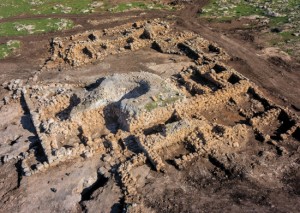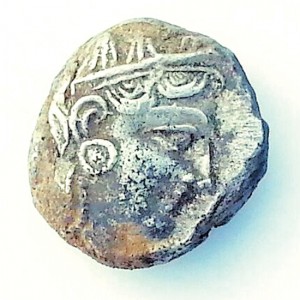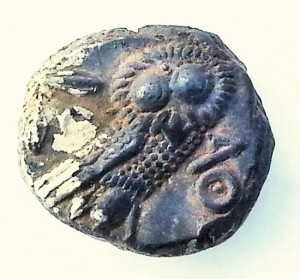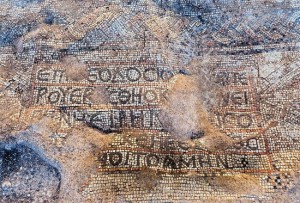×


We have detected your country as:
Please click here to go to the USA website or select another country from the dropdown list.
 Impressive archaeological finds are currently being uncovered in extensive excavations carried out by the Israel Antiquities Authority (IAA), prior to the building of new neighborhoods in the municipality of Rosh Ha’ayin.
Impressive archaeological finds are currently being uncovered in extensive excavations carried out by the Israel Antiquities Authority (IAA), prior to the building of new neighborhoods in the municipality of Rosh Ha’ayin.
During the excavation an impressive 2,700-year-old farmhouse (30 × 50 m; 98 × 164 ft) and a 1,500-year-old church with colorful mosaics and inscriptions were both uncovered.
The farmhouse was preserved to a height of more than two meters (6.56 ft). The building is 2,700 years old and includes twenty-four rooms constructed around a central courtyard. A large storage compartment (silo) meant to protect the grain was uncovered in the courtyard. It seems that carbohydrates were as popular then as now, and the growing and processing of grain was fairly widespread in this rural-agricultural region.
 This fact was corroborated by other discoveries in the field that included numerous millstones used to grind the grain into flour. In addition, simple rock-hewn oil presses used in the production of olive oil were revealed.
This fact was corroborated by other discoveries in the field that included numerous millstones used to grind the grain into flour. In addition, simple rock-hewn oil presses used in the production of olive oil were revealed.  Among other artifacts discovered in the farmhouse were the remains of two silver coins from the 4th century BC that bear the likenesses of the goddess Athena and the Athenian owl.
Among other artifacts discovered in the farmhouse were the remains of two silver coins from the 4th century BC that bear the likenesses of the goddess Athena and the Athenian owl.
According to the IAA, this farmstead and other similar ones operated for centuries until the region was abandoned in the Hellenistic period. During the 5th century, another settlement wave, this one Christian, arrived in the area and changed the landscape. The rapid spread of Christianity at that time is evidenced by the many impressive rural churches and monasteries that have been exposed.
 A monastery dating to the Byzantine period was exposed on one of the hills in the area and included a church, an oil press, residential quarters and stables equipped with mangers and troughs. The floors of the church built in the monastery were made of colorful mosaics that included geometric and other designs. In addition, a Greek inscription ascribed to a priest named Theodosius (a common name in the Byzantine period) was revealed in one of the mosaics: “This place was built under Theodosius the priest. Peace be with you when you come, peace be with you when you go, Amen.”
A monastery dating to the Byzantine period was exposed on one of the hills in the area and included a church, an oil press, residential quarters and stables equipped with mangers and troughs. The floors of the church built in the monastery were made of colorful mosaics that included geometric and other designs. In addition, a Greek inscription ascribed to a priest named Theodosius (a common name in the Byzantine period) was revealed in one of the mosaics: “This place was built under Theodosius the priest. Peace be with you when you come, peace be with you when you go, Amen.”
Hundreds of years after the monastery ceased to function, a lime kiln was established there in the Ottoman period, which destroyed large parts of the building.
Given the impressive finds uncovered in the excavations, it was decided that the ancient remains will be conserved in situ, and will be on display for the benefit of the public.
Source: Excerpt of article by Edgar Asher, Ashernet
Photo Credit: Ashernet and IAA
All logos and trademarks in this site are property of their respective owner. All other materials are property of Bridges for Peace. Copyright © 2024.
Website Site Design by J-Town Internet Services Ltd. - Based in Jerusalem and Serving the World.